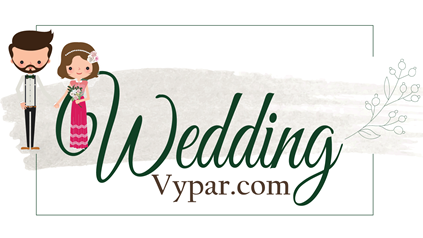Korean Wedding Rituals
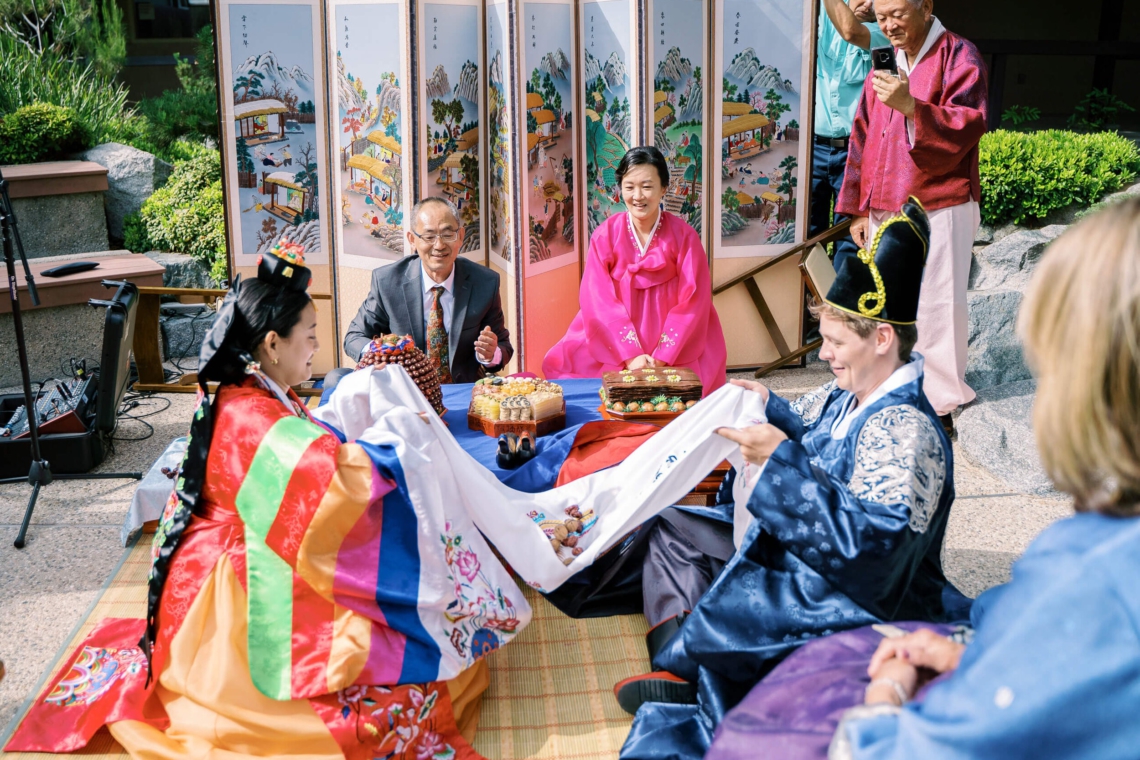
Marriage is one of the most precious and unforgettable times in most people’s lives. Every country has its way of celebrating this big event depending upon their religion, values and customs.In Korea, marriage is considered to be the union of two families rather than the two getting married.
Korean wedding Rituals in general put a lot of emphasis on love, commitment and family bonds. Nearly all people believe their parents to be the most loving and are an important part of one’s life. Similarly, in Korea, parents are highly respected and play a huge role in weddings. They are usually the very hosts of the wedding and their participation in every ritual can be seen.
Apart from this one can expect to see people wearing vibrant traditional outfits with light aesthetics and the couple wearing bright red and blue colours. You may also see a Westernised Korean wedding as the young generation may opt for one. In addition to that many mouth-watering cuisines of Korea are served during the post ceremony meal which represents the longevity of their relationship. Also, many culturally significant rituals are performed during a Koran wedding. They are usually short and last for thirty minutes to one hour. Here are the Korean wedding rituals that you may want to know before attending a Korean wedding.
Pre-wedding rituals
Match-making
When it comes to traditional Korean weddings the matchmaking ceremony plays an important role. It is one of the first steps in a marriage. Usually, a meeting is arranged by the matchmakers and the parents of the potential couple.
Many factors are taken into consideration before setting the couple up including domestic background, star signs, and social status. In modern Korean society where love marriages are more common, this ceremony is less likely to be seen.
The Family Visit
In the second step known as “The Family Visit,”the Groom’s family or a close relative pays a visit to the bride’s house and formally asks her parents for their consent. The visitor also brings gifts and treats such as alcohol, sweets, and some traditional food with him. If the gifts are accepted by the bride’s family it signifies the acceptance of the proposal.
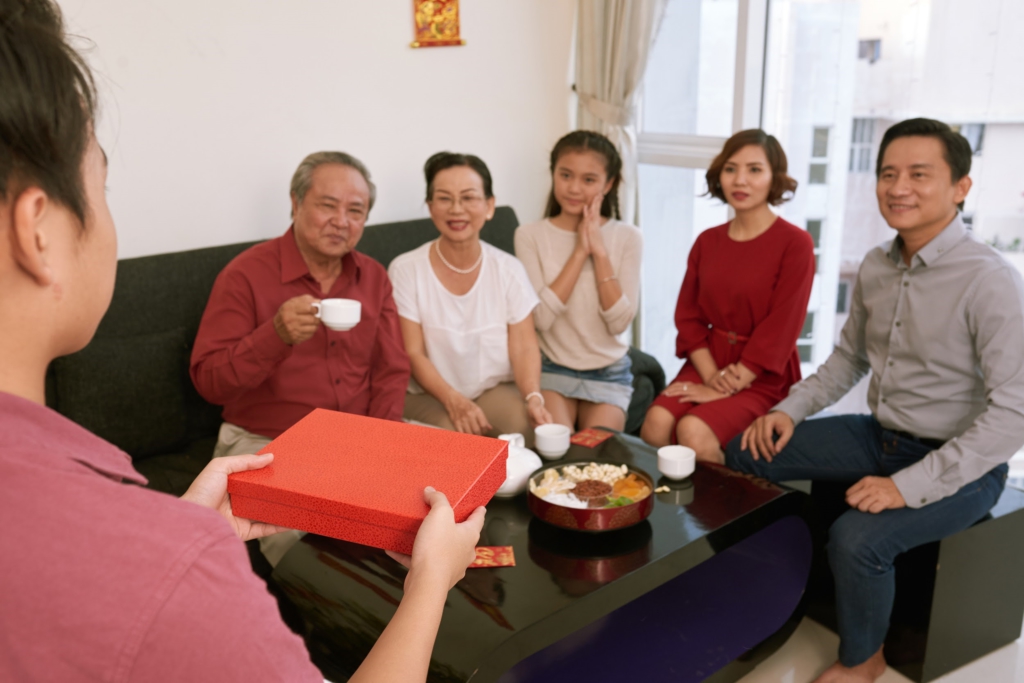
Engagement ceremony
After the family visit an engagement ceremony is held to formalise the relationship. Many close friends and relatives from both sides are invited to celebrate the day. During the ceremony, the couple usually exchange rings and other solid gifts and officially announce their engagement.
The families may also discuss the important procedures or steps for the wedding such as the format of the wedding, the number of guests to be invited, cost distribution for the arrangements and the wedding dates. The family can further enjoy the event with some classical Korean music and sing along with karaoke.
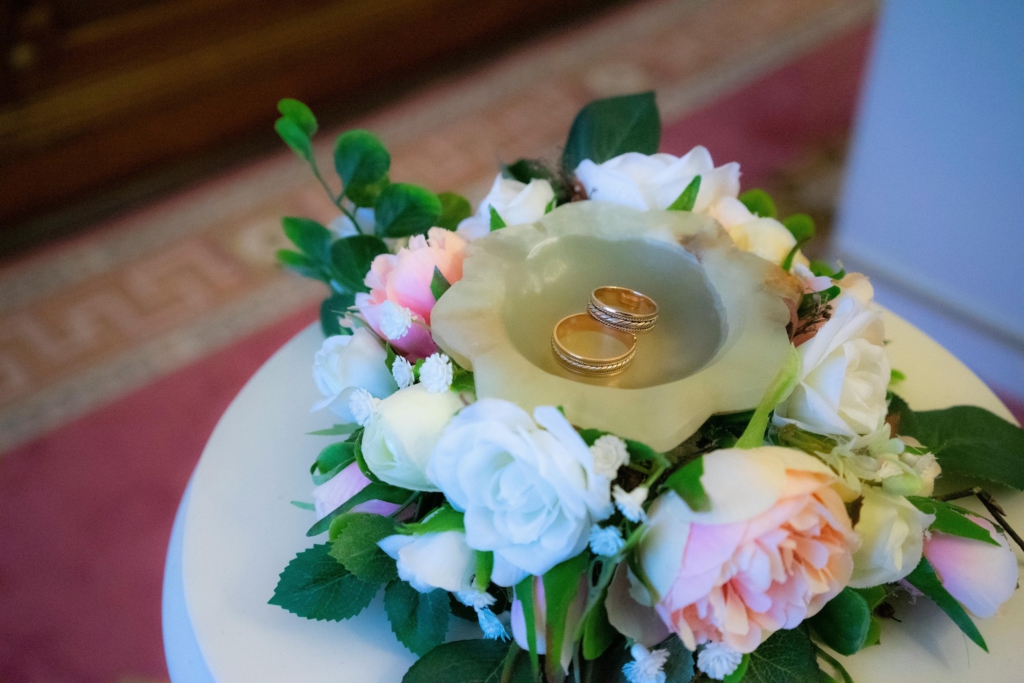
Horoscope and fortune tellers
Fortune telling is one of the practices that has been in Korea for ages. People also believe in horoscopes and couples visit fortune tellers to predict the compatibility and prosperity of their marriage. Interestingly they give you new perspectives on life and can help you find solutions to any problems that you may have. These predictions are usually based on the personalities, facial characteristics and birthdates of the couple.
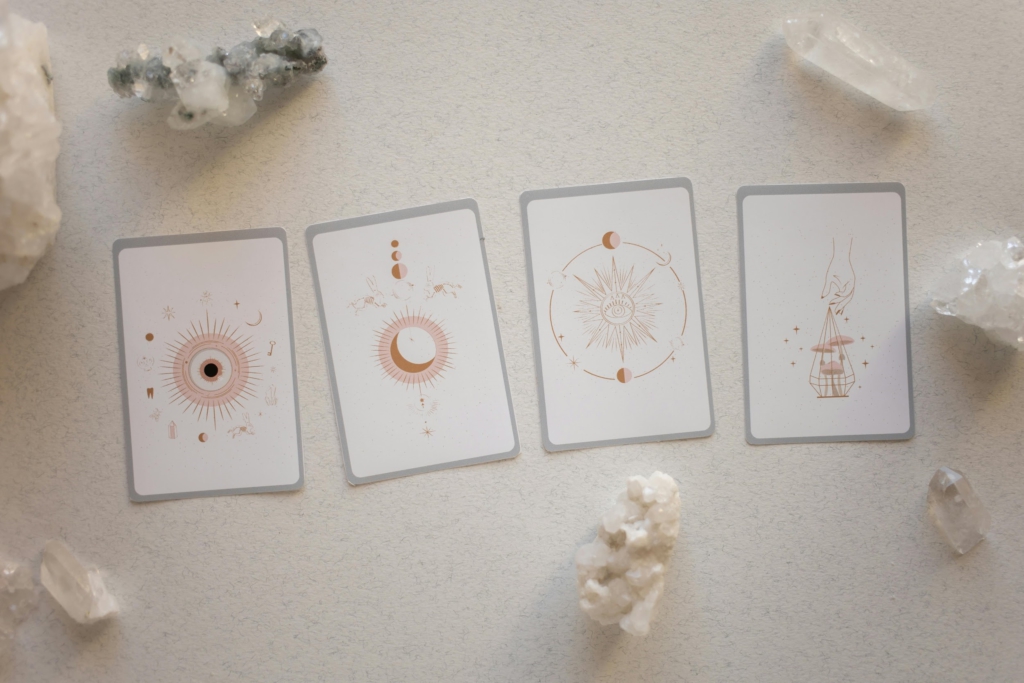
Betrothal Gifts or Hahm
In earlier times the groom’s side would give gifts to the bride in a box called hahm signifying the appreciation and commitment for the relationship. The groom along with his close friends would arrive at the bride’s home with the hahm singing and chanting that this box (hahm) is for sale. The parents of the bride would give gifts and money to the friends for the delivery. This activity is very entertaining and full of laughter.
The hehm typically contains expensive items including jewellery, designer clothing and cash.
In present-day Korean weddings couples instead of celebrating the day of hahm opt for the exchange of expensive gifts on the engagement day.
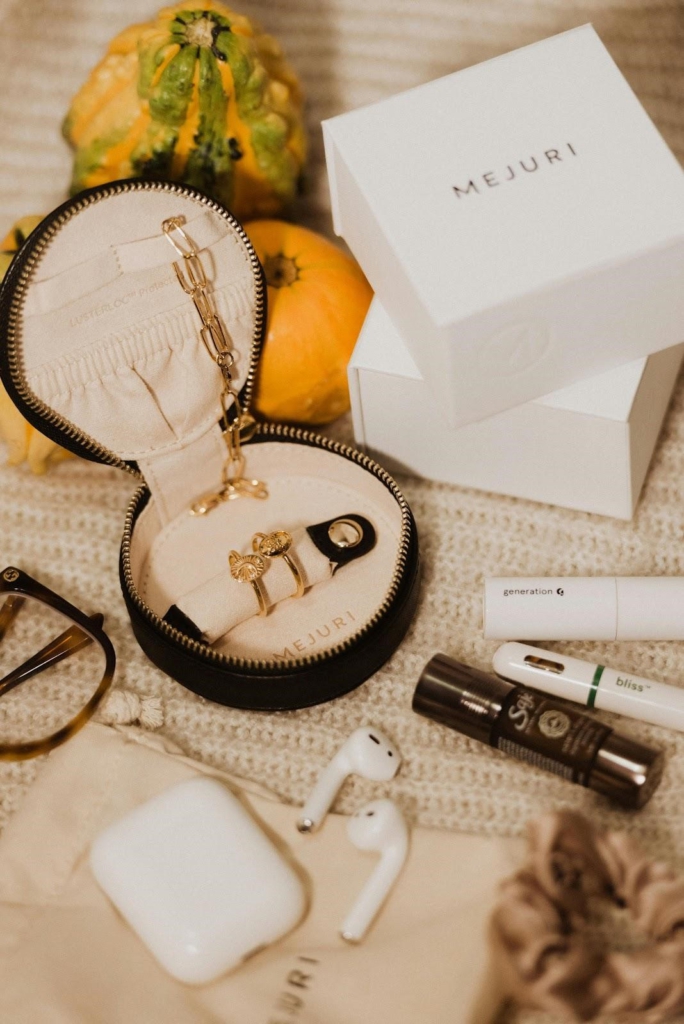
Wedding day rituals
Processional parade
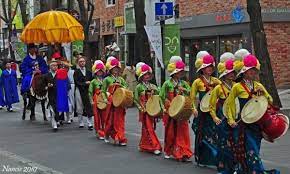
In the past, a processional parade was held before the main wedding ceremony in which the traditional music of Korea was played. The groom held the parade to the bride’s house on a horse.
Nowadays the wedding begins with the entry of an officiant in the wedding venue. The officiant would explain and guide the guests through the sequence of the ceremony. After that, the mothers of both sides would hold candles (the bride’s mother will hold a red candle and the groom’s mother will hold a blue candle) similar to their child’s hanbok. After reaching the processional end, a single candle is lit by them together which symbolises the beginning of the wedding.
Check this also Baniya /Agarwal wedding rituals
Jeonanyre or the Wild Goose
Another interesting ritual of Korean weddings is the presentation of Jeonanyre. In this, the groom presents a wild living goose (kireogi) to the bride’s mother before the main event. Also before presenting this gift, he bows twice in front of her as a sign of respect. The thought behind this gift is quite fascinating. These geese are known to mate for life symbolising loyalty and faithfulness towards their new partner. In contemporary times a wooden goose is gifted by the groom instead of a living one.
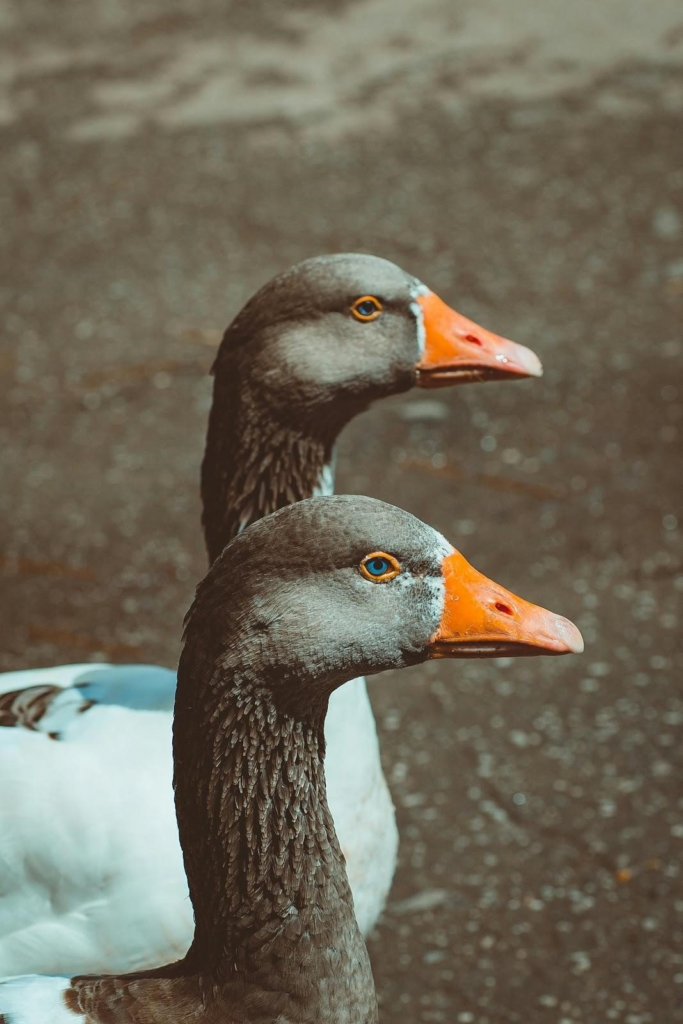
Also check this out: Indian Wedding Rituals
Gyobaerye: Bowing ceremony
The bowing culture has been there in Korea for ages. Before the ceremony, both partners wash their hands symbolizing cleanliness for this pious task. In the gyo-bareye ceremony, the bride and groom take their vows and bow to each other. This beautiful ceremony signifies their commitment and respect for one another.
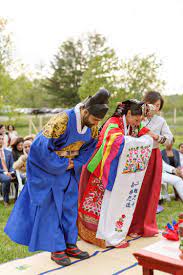
Hapgeunrey:
After the bowing ceremony, the couple would seal their wedding vows by sipping a special rice wine in a gourd provided and grown by the bride’s mother. The first sip of the wine is taken from separate copper cups. Then the wine from both cups is mixed well poured into gourd cups and sipped again. The couple finally bows in front of their parents as they announce their wedding.
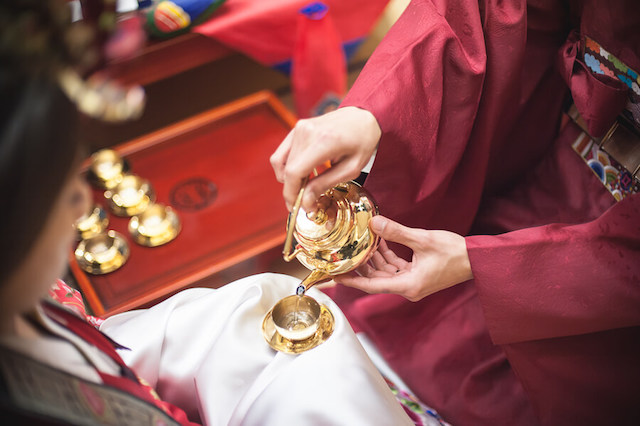
After the final step of the wedding, the souls are now united and the families continue to celebrate the pious union of the two in the following post-wedding ceremonies.
Check this also Christian Wedding Rituals
Post-Korean Wedding Rituals
Wedding gifts
The most common wedding gift in Korea as well as in many Asian countries is congratulatory wedding money. The guests put money in a white envelope with their names on it and give it to the couple. This money is calculated and usually written in a book of visitors.
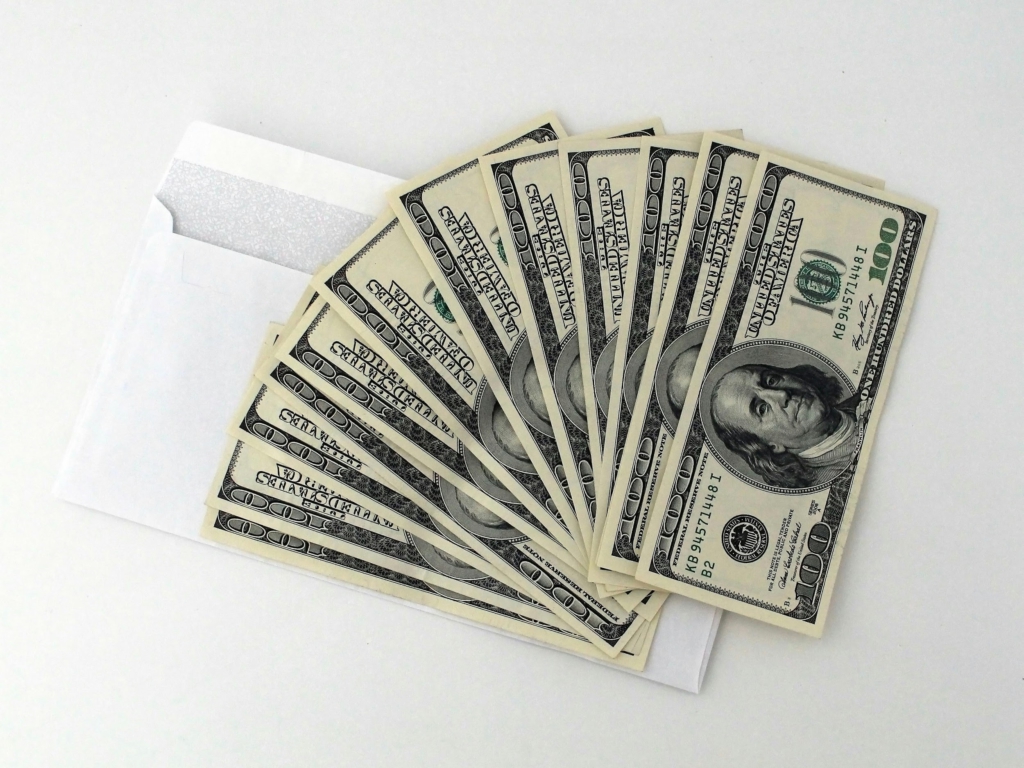
The amount usually depends on the relationship and closeness between the guest and the couple. If you are a close relative or like a best friend to the couple you are likely to give more money than others.
Check this also Jain Wedding Rituals
Traditional Wedding Food and Reception
The Korean wedding reception is generally very short with little going on. The guests head towards the tables almost immediately after the wedding ceremony. Korean wedding meals may include dishes like
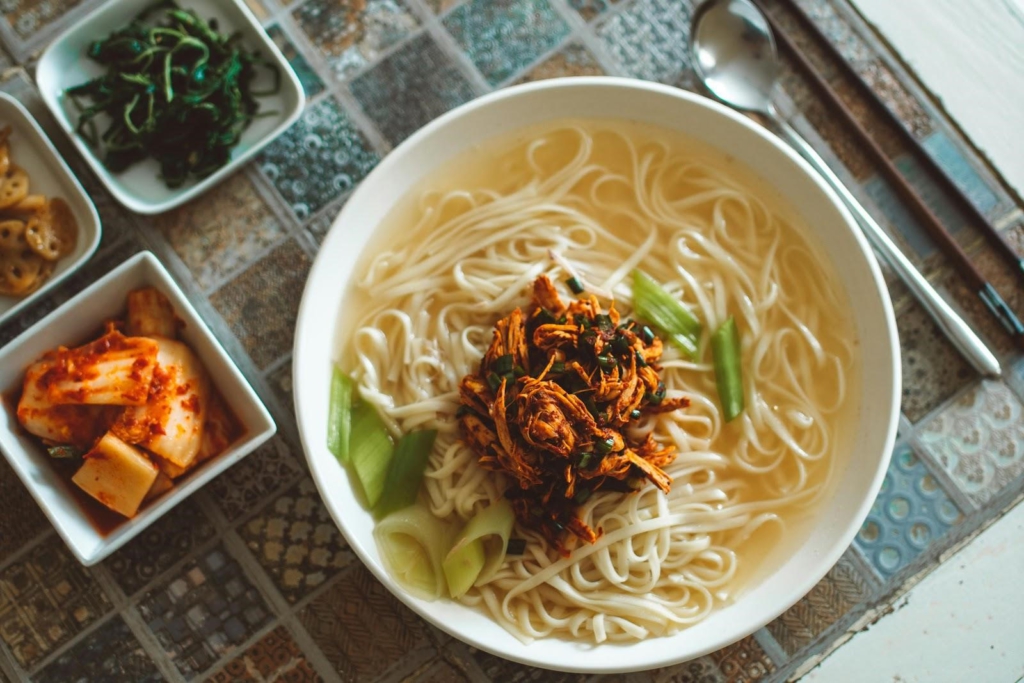
Kook-soo-sang (noodle soup) is one of the common wedding dishes served in Korea. These noodles are boiled in clear beef broth and garnished with eggs and sliced veggies.
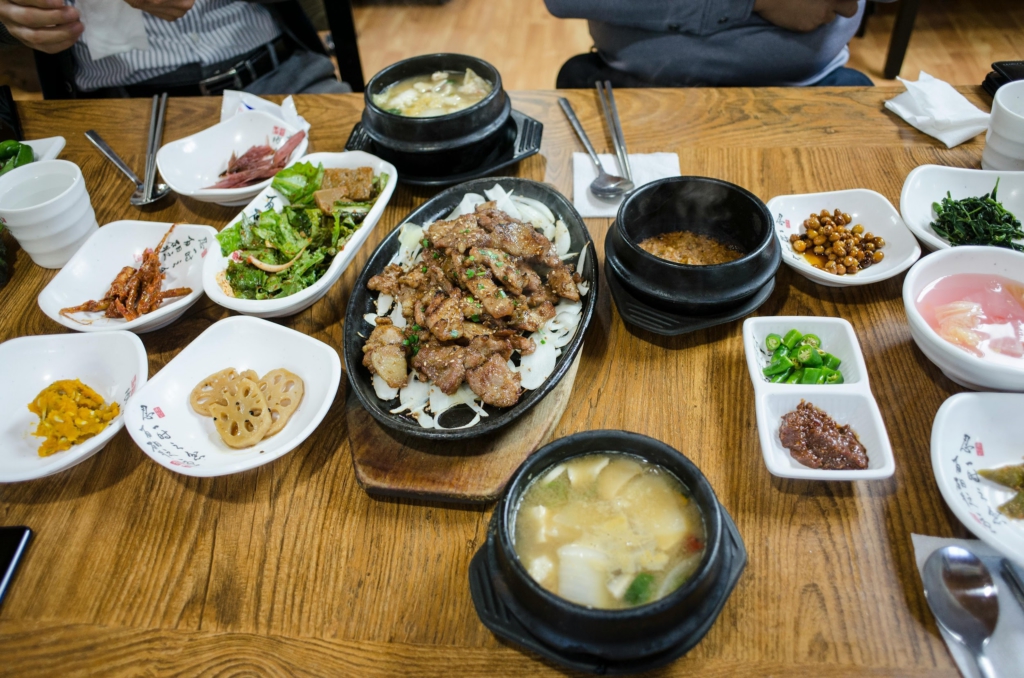
Dok (sticky rice cake) is a rice dessert that is very popular in Korea. Galbi (grilled short ribs) with some kimchi on the side, Bulgogi (marinated grilled beef) and Samgyetang (chicken soup). Lastly, they may also have salads with some seafood snacks including shrimp, haemul pajeon (scallions and seafood-made pancakes) and steamed squid. The couple after their meal room around the venue to greet the guests and express their gratitude for being a part of their special day.
Check this also Catholic Wedding Rituals
Korean wedding attire hanboks
Traditionally the bride and groom on their wedding day would wear a traditional outfit of Korea known as hanbok. Korean culture has an interesting history of colours, people tend to wear specific colours on specific occasions.
On the wedding day, the bride usually wears red and the groom wears blue symbolising the balance in energies of the two colours. The red (yang) colour represents active energy and enthusiasm while the Blue (yin) colour represents relaxation and healing. The bride also used to get red dots sized like a coin painted on her cheeks to keep the evil eye away.
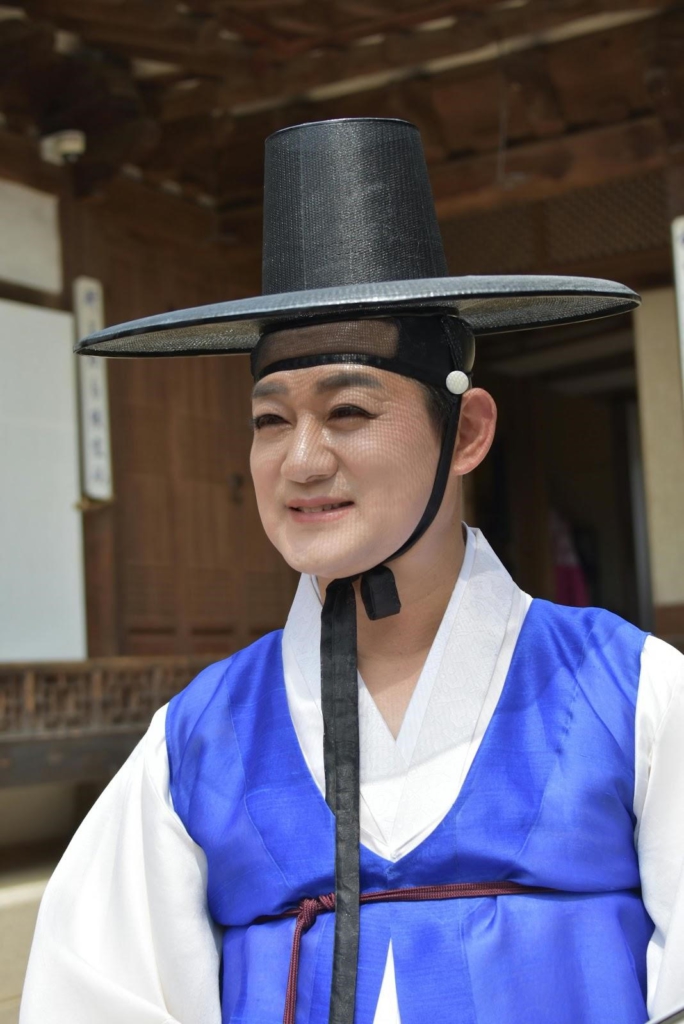
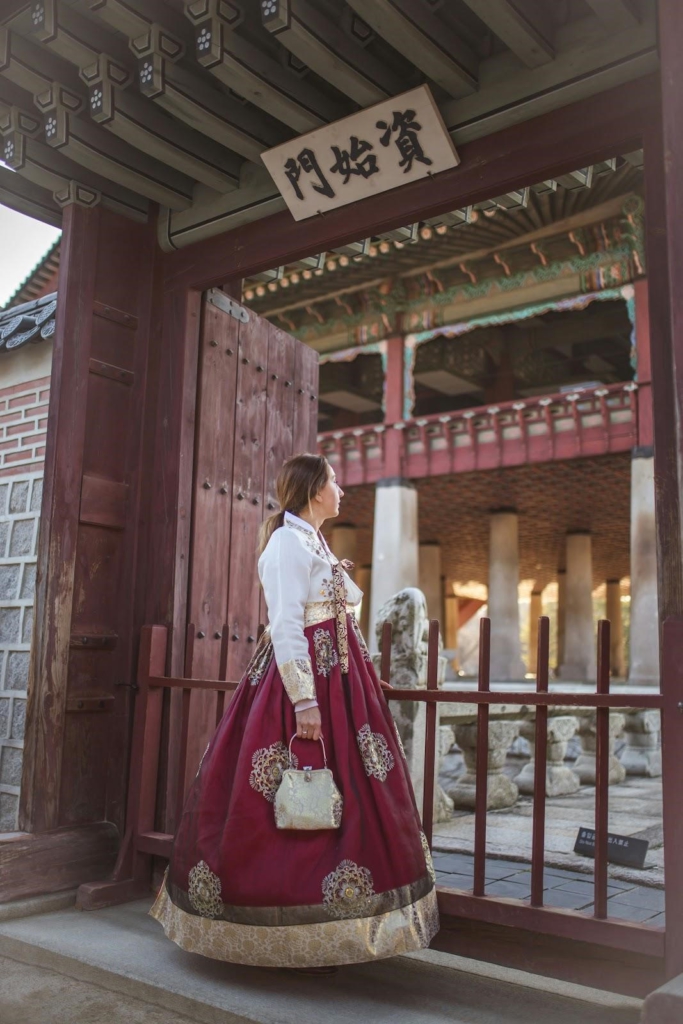
Furthermore, the mothers of both partners also wore specific colours. Generally, the bride’s mother will wear colours like orange, pink, purple or any other pastel colours and the groom’s mother will go for cooler tones like green, grey and light blue to show the relationship with the couple.
Check this also Odia wedding rituals
Paybaek
The couple along with their families participate in a small intimate ritual known as paybaek. They sit at a low table with lots of food and snacks. The couple pours tea and soju for the parents and in return receives money, gifts and blessings from them. The bride offers her in-laws some chestnuts and jujubes ( Korean dates) which symbolise fertility.
At the end of the ceremony, the couple holds a white cloth. Then the bride’s in-laws toss these chestnuts and dates at the couple while they attempt to catch them with the cloth. The number of dates catched represents the future sons and chestnuts represent the future daughters.
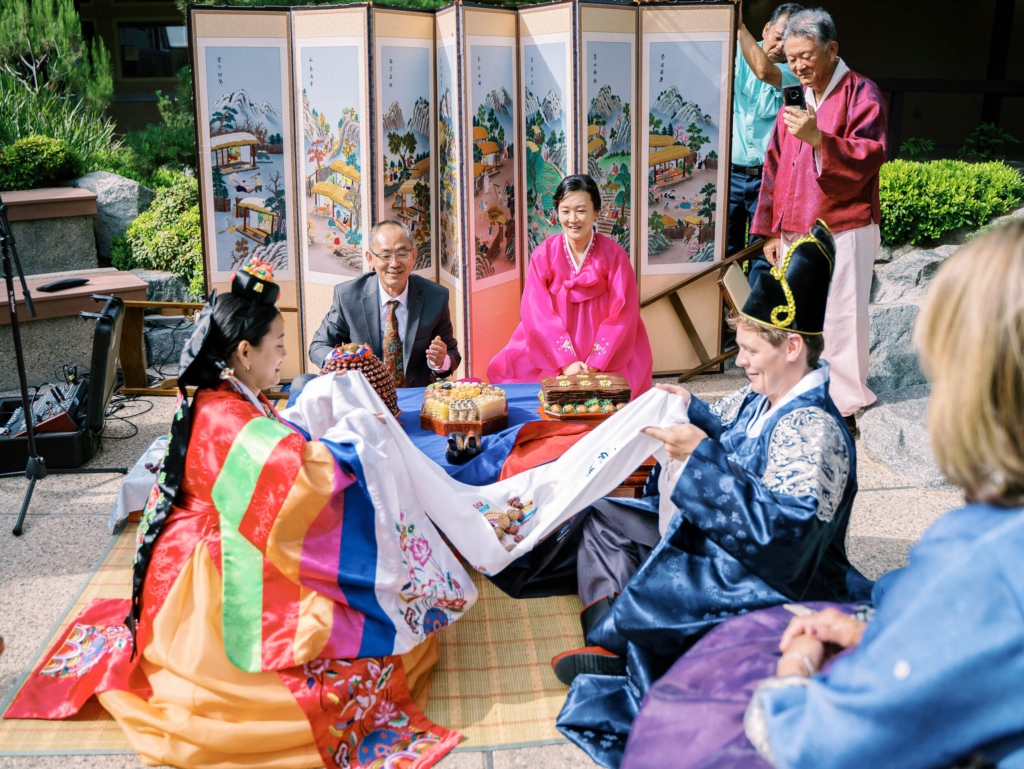
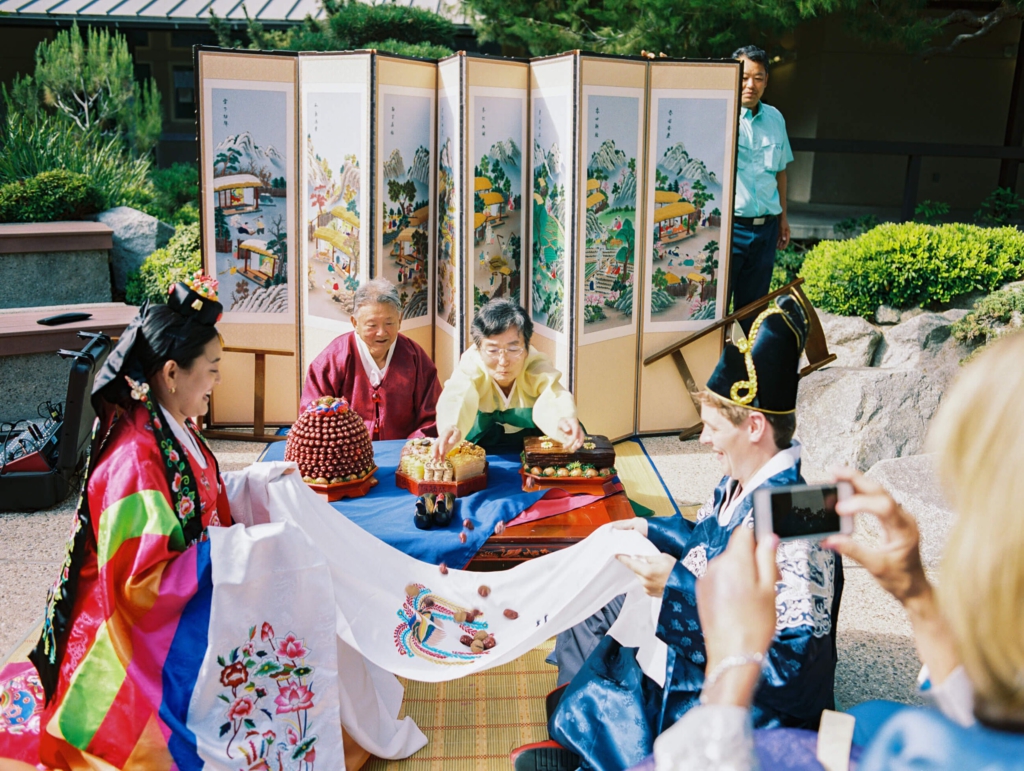
These were the rituals that are usually performed at a Korean wedding. Korean weddings are simple yet very beautiful as they reflect the beauty of the age-old traditions of Korea. Each ritual from the processional parade to the paybaek shows the love, commitment and respect the couple has for their culture and the relationship. We hope that now you are more familiar with all the Korean rituals.
Check this also Royal Rajput Wedding Rituals
